||| FROM PATTY RUBSTELLO for WASHINGTON STATE FERRIES |||
In my third year at the helm of Washington State Ferries, there were many exciting highlights, including dynamic workforce development plans and the completion of major construction projects. However, as we continue to juggle both limited crewing and vessel availability, our service has not returned to pre-pandemic levels.

High school students learned about job opportunities with us at our career fair in May while aboard Kaleetan, docked at our Eagle Harbor Maintenance Facility.
Our aging fleet had a difficult 2023, as several older boats had to be repaired and other incidents forced service adjustments. We are also not immune from the global shortage of mariners impacting ferry service around the world. For those who rely on our ferry system, from daily commuters, those accessing healthcare, and weekend tourists, it continues to be a challenging time. These constraints are both addressed in our new Service Contingency Plan (PDF 834KB), released earlier this month, which lays out a road map to addressing new crew and vessel availability and restoring ferry service systemwide. I discuss this plan more below.

Propeller damage took Walla Walla out of service for several months late in the year for unplanned maintenance. This was one of several incidents that caused us to shuffle our limited fleet of aging ferries to maintain service on all our routes.
As I announced last month, I will be stepping down from my role early this year, after we hire my successor. I will do everything I can to ensure a smooth transition, including a continued emphasis on the pillars of organization. As always, passenger and crewmember safety is our top priority, as rebuilding our fleet, strengthening our workforce and upgrading infrastructure will remain top focuses for our system going forward.
Our team is a resilient group, and I thank them for their never-ending efforts to provide customers with up-to-date information, ensure safe travel and continue to plan and build back service. The past year featured a number of memorable moments, here are highlights.

Planning for more reliable service
New boats are coming, but not until 2028. With that in mind, we recently released a Service Contingency Plan (PDF 834KB), which provides a transparent outline of how we plan to add service – sometimes temporarily – when we have the available vessels and crewing to do so. While we do not expect full, permanent restoration of all our domestic routes until we receive new ferries, there will be times – including entire sailing seasons – when we may be able to run additional service on one or more of our unrestored routes. Restoration of international service to Sidney, British Columbia, is projected for 2030.
A replacement to our COVID-19 Service Restoration Plan, this new plan also details how we intend to make service decisions during unplanned and/or emergency disruptions. It will guide us as we manage the needs of maintaining an aging 21-boat fleet with schedules that currently require at least 15 vessels to be in operation, along with limited crewing availability.
Vessel availability
Our biggest issue going into 2024 is vessel availability. Nine years ago, we had 24 vessels. We are now down to 21 boats, with the oldest in the fleet being 64 years old. Our Long Range Plan, published in 2019, calls for 26 vessels to be able to provide reliable service on every route with time for inspection, maintenance and preservation work.
For most of 2023, we operated with 15 vessels in service, the minimum needed to operate our current schedules. We dropped below that at times, mainly because of incidents requiring unplanned repairs. Operating full service on every route requires 19 vessels in the summer, 18 in the spring and fall “shoulder” seasons (generally Mother’s Day to Indigenous Peoples’ Day) and 17 in the late fall/winter/early spring. Due to the increasing age of the fleet and a long history of deferred vessel maintenance, we believe planning for a baseline of 15 vessels in service, with up to 17 available for portions of the year, is the most reasonable projection for the next four years. With limited vessel availability, we will be unable to operate full service until new vessels are constructed and delivered.

Walla Walla was out of service for several weeks in the spring for unplanned maintenance after it ran aground in Rich Passage. I sincerely thank crew for their quick actions and professionalism. With help from Washington State Patrol, USCG and Kitsap Transit, we were able to get passengers to land safely. It was determined that contaminated fuel caused a generator failure, which led to the second generator failing for the same reason seconds later.
New ferries
As we push to build new vessels, we issued a Request for Information in December to the shipbuilding industry across the country, following legislative direction to build five new hybrid-electric Olympic-class ferries. Responses are due later this month and an invitation to bid will be issued in the spring. This follows new legislation (PDF 134KB) passed last year allowing us to solicit bids nationwide when building new boats.
An image of a hybrid-electric ferry design for new build request.
Electrifying our fleet
Transitioning to a hybrid-electric fleet is key to reducing emissions, ensuring resiliency and reducing operations and maintenance costs. In addition to building five new hybrid-electric Olympic-class ferries, we awarded Vigor a $100 million contract last year to convert up to three of our existing Jumbo Mark II-class ferries to hybrid-electric power and replace aging vessel propulsion control systems. Work began in September on the Wenatchee with plans to finish work later this year. Tacoma will be next, with the option to extend the contract to convert Puyallup next year. This will result in an anticipated 95% reduction in greenhouse gas emissions on these vessels.

The Wenatchee is the first of our ferries to be converted to hybrid electric. The conversion is expected to finish in late 2024.
We signed a partnership agreement with Puget Sound Energy in May to electrify eight of our terminals. That’s half of the docks we’re planning to retrofit as part of our electrification efforts. Construction kicks off in 2025 with our Bainbridge terminal. PSE is one of five utilities we’re partnering with as we transition to a hybrid-electric ferry system that will reduce greenhouse gases and improve local air quality.
Workforce development and crew availability
In 2023, we hired 183 employees for deck, engine and terminal positions. We also started several new programs with the idea of long-term sustainability in our workforce. However, as with any business, we have seen departures due to retirement and resignations, leaving us short of the total we need to operate at pre-pandemic service levels. We are in particular need of licensed positions, which take years of experience and training to accomplish. Our team is making progress; however, 50% of our most credentialed deck and engine room employees are retirement eligible in the next five years, meaning we need to stay ahead of the attrition that is coming in our workforce.
We were thrilled to announce that we are offering 12 scholarships a year to people interested in becoming a licensed deck officer as we address our crewing needs. In conjunction with the Maritime Institute of Technology and Graduate Studies, the two-year apprenticeship program includes 100% of the tuition for academic training and onboard experience, along with a daily stipend. The program is designed to open doors to candidates interested in becoming U.S. Coast Guard-licensed mates. No experience is required. The program begins in February.

In April, Gov. Inslee spoke at a graduation ceremony for our employees who had completed the “AB-to-Mate” program. The 12 able-bodied sailors were working towards earning their USCG mate’s licenses. Due to Gov. Inslee and the state Legislature working to secure funding, our deck crewmembers are now paid to take courses and exams to work towards getting the licensing they need, helping us fill crucial roles.
We received funding for several workforce development programs, including $8.1 million for an able-bodied sailor to mate program, $1.07 million to hire entry-level engine room employees and train them to be oilers and $1.02 million for apprenticeships at our Eagle Harbor Maintenance Facility. Our work with MITAGS has been fruitful and we will continue to train current and prospective staff through their numerous programs.
We also bolstered our recruiting efforts in 2023, attending 55 career fairs and maritime recruiting events in nine states. We also attended two tribal and three military events as well as hosting our very first career day in May. That career fair brought high school students from the Puget Sound region to Eagle Harbor, giving teenagers the chance to witness what it’s like to work in maritime and trades. Students from Central Kitsap, Enumclaw, Kingston, North Kitsap and South Kitsap high schools attended as part of our plan to bring long-term stability to our workforce.

High school students learned about job opportunities with us inside the engine room of Kaleetan, while docked at our Eagle Harbor Maintenance Facility.
In the spring, we worked with an outside public relations firm to create the “Come sail with us” media campaign to boost our visibility in hiring. The effort saw over 3 million impressions on our social media platforms. We received nearly 250 applications for deck and terminal positions during this time, seeing a 7% increase in diversity in the deck applicant pool and a 4.5% increase in veteran applicants.
In December, members of the Seattle Maritime Academy toured the engine rooms on the Suquamish and Tacoma. The students from the Marine Engineering Technology program heard from several crewmembers, including a recent SMA alum, on what it takes to become a successful oiler. Over 20% of our current engine room employees graduated from SMA, setting up a valuable connection for future staff.
Last year, we also partnered with Core Plus Maritime to help us reach more students within the Puget Sound region. Members from the group joined a tour of Kaleetan along with Tulalip High School students, who had the opportunity to put on full firefighting gear during their visit.

A group from Seattle Jobs Initiative toured the Tacoma and Eagle Harbor in September, learning about opportunities in the wheelhouse and engine room. SJI works with individuals to provide skills training in the maritime industry.
We have made it a tenet of our hiring process to increase recruitment of women, BIPOC (Black, Indigenous, People of Color) and those in the LGBTQ (Lesbian, Gay, Bisexual, Transgender and Questioning) community. In 2023, we implemented new programs aimed at increasing diversity and strengthening opportunities for current employees. We connected with a new group, as COMPASS (Career Opportunity Preparation and Support Services), a program to develop women, minorities, and other underrepresented individuals to prepare them for marine careers. A cohort graduated in December, which will allow them to apply for an accelerated ordinary sailor program this month. In August, Capt. Genevieve Fritschen led an all-women wheelhouse team aboard Suquamish, highlighting the possibilities when we open our doors to all who want to be a part our team.
We continue to build our team and currently have several job openings.

New hires have to pass deck orientation before working aboard our ferries. The two-week course includes firefighting, personal safety and survival, first aid, classroom time, and job duty familiarization. I share my utmost respect for my classmates, who were great supporters throughout the process. This course serves as training for ordinary sailors, while preparation for our most-needed positions-mate, captain, assistant engineer or chief engineer-entails much more instruction and time to complete.
2023 employee profiles
Our nearly 1,800 employees do vital work that often goes unrecognized. The tremendous effort put in by our staff is key to continuing to build our workforce as we face challenges in hiring. In 2023, we featured several staff members in employee profiles, highlighting the important work that everyone, from boilermakers to watch supervisors to sheet metal workers, does to make the ferry system function. We are excited to profile more members of our wonderful team in 2024.
- Wendy Bradford, Boilermaker
- Rachel Morrison, Crew Resource Manager
- Vern Rosbach, Terminal Supervisor
- Don Gillespie, Locksmith Foreman
- Bill Schweyen, Senior Port Engineer
- Joshua Edwards, Able-Bodied Sailor
- John Miller, Marine Operations Watch Supervisor
- Andrew Tomko, Technical Training Consultant
- John McKay, IT Supervisor
- Stephanie Jackson, Marine Sheet Metal Worker
- Adrienne Stutes, Lead Biologist/Environmental and Permitting Lead
- John Bredin, Terminal Attendant
Major construction projects
Dedication of new Seattle terminal
On Oct. 23, WSDOT Secretary Roger Millar and I hosted Gov. Jay Inslee, tribal, county and city leaders, along with project staff and contractors at a dedication ceremony for our new Seattle Multimodal Ferry Terminal at Colman Dock. This was the final step in a seven-year, $489 million project, which features a new entry building and elevated pedestrian walkway, to go with being built to current seismic standards and having key environmental features like passive heating and cooling. The terminal received regional recognition at the 2023 America’s Transportation Awards, taking home the Quality of Life/Community Development, Large Category, prize.

A dedication ceremony for the newly-renovated Colman Dock was held in October.

During the Colman Dock dedication event in October, Gov. Inslee named Terminal Attendant Carol Stearns, a 48-year WSF employee, as “Washingtonian of the Day.”
New Bainbridge terminal overhead walkway
Following a year and a half of construction, the new overhead walkway at Bainbridge terminal will open later this month. The large bridge spans that make up the new walkway were installed in September during a six-day vehicle closure of the route.
The mechanical and electrical systems have been rebuilt, while windows, roofing, seating and infrared heaters have been installed. The previous structure has been removed from the site.

Over the six-day vehicle closure, the green bridge spans arrived by barge, moved one by one onto the vehicle lanes for staging then were lifted by crane into place.
Orcas Island terminal ADA project

In October, we joined San Juan County in celebrating the completion of a project that improves Americans with Disabilities Act and pedestrian access at our Orcas Island terminal. In partnership with the county, the project included the construction of ADA-accessible parking stalls, ramps and sidewalks, as well as a pedestrian pickup and drop-off area.
Office of Sustainability
2023 was a big year in our work towards sustainability. We transitioned all electrical accounts where green power is available to green power. This includes all facilities served by Puget Sound Energy, Snohomish Public Utility District, Seattle City Light and Tacoma Power. Of the 529 whale sightings in 2023, there were 497 killer whale, 18 humpback, seven gray whale, four harbor porpoise and three minke whale sightings. Our Chief Sustainability Officer Kevin Bartoy was invited to London by the U.S., Canadian and French delegations to the United Nations’ International Maritime Organization to speak on an expert panel on underwater radiated noise and ship energy efficiency. A waste audit of Colman Dock found that just three boats in one service day produce 1,200 pounds of waste, leading us to work towards publishing and implementing a waste management plan to try to achieve “zero waste.”
Community Engagement
Anacortes/San Juan Islands route schedule improvement task force
We kicked off a huge community outreach effort in the spring to update our Anacortes/San Juan Islands route schedule. The run’s four-season timetables are more than a decade old and need to be rewritten to improve on-time performance and reliability, and to align with the vehicle reservations program that started in 2015. We created a community task force to examine our current schedules, review options and make recommendations on how community input should be considered throughout the update process. The advisory group meets regularly, and the public is invited. The project webpage has recordings of past meetings and how to attend future meetings on Zoom. We will continue to work closely with the task force over the next year as we aim to implement a new sailing schedule in January 2025.
Fauntleroy terminal replacement project
We continue to gather public input on our Fauntleroy terminal replacement project, which is still in its planning and design phase. We hosted meetings last year with the project’s three advisory groups – community, executive and technical. The existing dock is aging, seismically vulnerable and needs to be replaced. During the meetings, each group reviewed draft alternatives – or options to replace the dock – and the draft screening criteria we’ll use to select an alternative. We are planning broader community engagement opportunities in spring 2024 to gather more input from our customers and all three communities on our “Triangle” route. Recordings of the advisory groups’ latest meetings are available on the community engagement section of the project website.
Virtual public meetings
Public engagement is vital to our process, and with that in mind, we annually host a pair of systemwide community meetings to hear from the customers we serve. In 2020 we switched from in-person to virtual meetings and that move has greatly enhanced our ability to reach more riders.
I would like to offer a big thank you to everyone who joined our virtual community meetings in 2023. Across meetings in January and June, we had nearly 1,000 attendees join to learn more about service restoration, workforce development and ongoing projects. Our team took questions on many topics, directly informing the public on what’s going on within the ferry system.

Our staff took questions on public meetings in January and June last year.
Customers show appreciation for ferry staff
We had several groups surprise our staff this year, as students from McMurray Middle School and the Bremerton Ferry Coalition showed their appreciation for vessel and terminal employees. The McMurray students delivered artwork, handwritten notes and treats to the terminal staff at Fauntleroy and Vashon, while the Bremerton group met with the Chimacum crew to show appreciation and begin efforts to establish a relationship with the ferry staff. These kind and thoughtful gestures are a great reminder of the impact we have on our customers!

The Bremerton Ferry Coalition visited the crew of the Chimacum in September.
Oh baby!
There was a good – and unusual – reason for a slight delay in the departure of a Bainbridge to Seattle morning commute sailing in April. A passenger alerted our Bainbridge terminal staff that his wife was in labor while they were parked in one of the holding lanes. Our employees leapt into action by immediately contacting and coordinating with emergency medical technicians and our vessel crews. Crews held up our 7:55 a.m. departure, so an ambulance with the new family could board first and exit first in Seattle to head to Swedish Medical Center. Congratulations to the new mom and dad and a ferry happy birthday to their baby!
Local sports “sea” support on downtown Seattle vessels
We have long enjoyed supporting our local teams as they compete for their leagues’ biggest prizes. In 2023, we flew flags for the Kraken’s first playoff appearance, the unveiling of the new Sounders’ logo and Megan Rapinoe’s final regular-season home match with OL Reign.

A “Forever Rapinoe” flag flew to commemorate Megan Rapinoe’s final regular-season home match at Lumen Field.
Kitsap crew frees feline at Clinton terminal
Our crew aboard Kitsap was told of a paw-carious situation on July 26: A kitten was seen roaming on an in-water terminal structure at Clinton. During their initial search, they spotted the cat in the water. The crew launched a rescue boat and retrieved the kitty as it clung to an offshore piling. Once ashore, they handed the feline over to our Clinton terminal employees, who created a comfortable kennel out of materials. The kitten was transported to the South Whidbey Animal Clinic for a check-up… and to see how many more lives it has remaining.

In July, the Kitsap crew rescued a cat from the Clinton terminal structure.
Community plays big role in installing new flagpole at Bainbridge terminal
A new flagpole was installed at our Bainbridge terminal thanks to Brad Staniewicz of Boy Scout Troop 1496 and a host of others in the community. For his Eagle Scout project, Brad raised money to replace the 65-year-old flagpole, which is a memorial for the late Walter Keys, who was responsible for much of the growth of the island. Following our approval, he quickly gained support from a variety of community members eager to help on the project. Brad helped host a ceremony on Veterans Day at the new flagpole.

A side-by-side image of the old and new flagpoles at the Bainbridge Island Terminal.
Vashon Island School District Commuter Family Picnic
The Vashon Island School District invited us to their Commuter Family Picnic at Lincoln Park in West Seattle on September 19. More than 250 students commute to schools on the island daily from our Fauntleroy and Southworth terminals. Planning, Customer and Government Relations Deputy Director Hadley Rodero provided tips for riding our ferries and how to get service updates for our “Triangle” route.

Vashon Island School District faculty, staff and commuter students posed for a photo at their Commuter Family Picnic Tuesday near our Fauntleroy terminal.
Fauntleroy terminal employees participate in salmon drumming event
Over 80 people gathered on Oct. 22 to call salmon to Fauntleroy Creek, which passes right by our Fauntleroy terminal. Fauntleroy Terminal Supervisor Anthony Goch and other staff members joined residents at the event to sing and drum as part of a 29-year-old tradition to call salmon “home” to the creek.
Life-saving events
Suquamish crew rescues person overboard off West Seattle
The highly trained crew aboard Suquamish rescued a person overboard off West Seattle on Feb. 25. Around 1 p.m., while sailing from Seattle to Bainbridge, our crewmembers quickly sprang into action upon notification of the incident. Within minutes, they were able to recover the person out of the water and onto a rescue boat. With the person back on board the ferry, the crew returned to Colman Dock and transferred the patient to emergency services who were standing by.
Employees use AED to save life of customer at Edmonds terminal
Our employees helped save a life at Edmonds terminal on Aug. 26. A man was about to walk aboard Spokane when he stopped and fell backward, hitting his head hard on the ground, knocking him unconscious. Terminal staff, vessel crewmembers, and passengers with medical experience administered CPR and used an automated external defibrillator three times on the man, who eventually regained consciousness. When paramedics arrived, they told our employees if it were not for their quick actions, the man would not have made it.
I thank everyone for leaping into action to ensure the safety of our customers. Your service does not go unnoticed.
Look ahead to 2024
As we begin 2024, I thank everyone who made this chapter so fulfilling. I appreciate the efforts of those in our ferry family who took time away from their families to help others safely reach their destinations throughout the year.
When it comes to work, our workforce development initiatives like the new mate scholarships, able-bodied sailor to mate programs and the oiler to assistant engineer license prep class underscore our commitment to the growth of our employees. Adding a second shift at Eagle Harbor, along with more apprenticeships, will help ensure robust support for the much-needed maintenance of our fleet. These innovative programs and a focus on recruitment will go a long way toward addressing staff shortages. The collective efforts across our system – from dispatch to terminals, vessel crews to Eagle Harbor and every area across the organization – have made this year as successful as it could have been under our many constraints. As we look ahead to a better 2024, I am encouraged that we’ll have smooth sailing with my transition and that the future will be bright for Washington State Ferries.
**If you are reading theOrcasonian for free, thank your fellow islanders. If you would like to support theOrcasonian CLICK HERE to set your modestly-priced, voluntary subscription. Otherwise, no worries; we’re happy to share with you.**
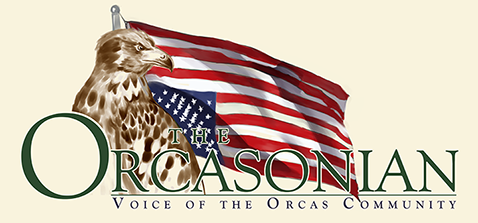
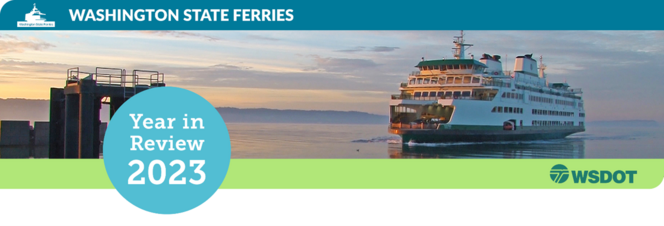

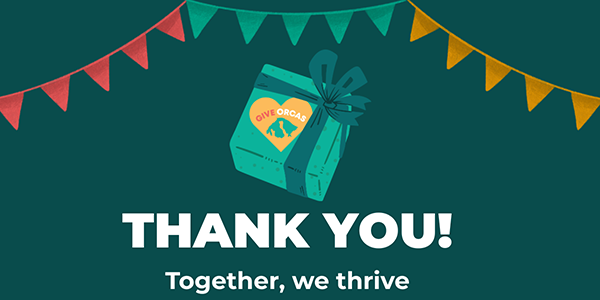
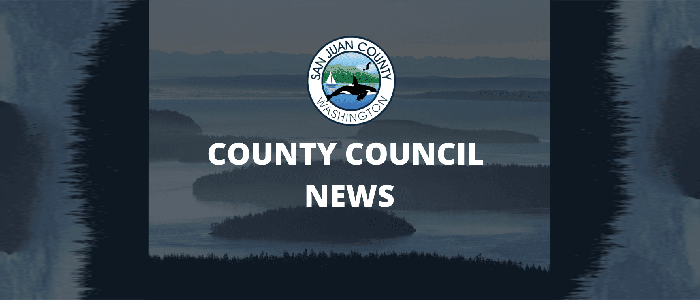



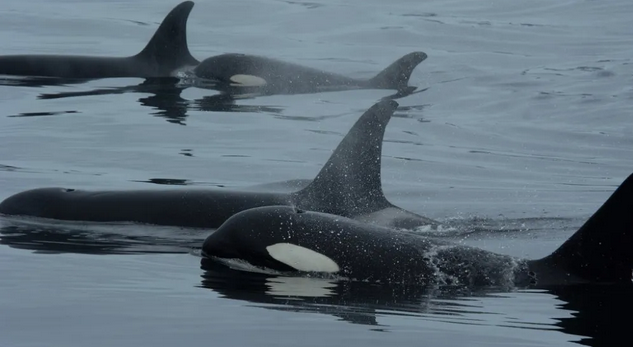
“As we look ahead to a better 2024…” Well, it would take some serious effort to be worse than 2023! Perhaps with competent leadership the WSF system can be made functional in the years to come. Perhaps not. Perhaps the WSF system is so bureaucratically top-heavy that it needs a complete overhaul? Any serious long-term plan must take into account climate destabilization, including rising sea levels, as well as the acknowledgment that moving passenger cars across the water is stupidly inefficient, expensive and unnecessary. An integrated system of fast, passenger/light cargo ferries and multi-modal transportation at the terminals could transform the WSF fleet at a far lower cost than building ever more absurdly priced mega-ferries.
Remember the three aluminum “FastCat” BC ferries built in 1998-2000 that wound up being three years behind schedule? And instead of the budgeted $210M they ultimately wound up costing $460M and were then auctioned off for $19.4M in 2003? All that wasted time, money and energy building STUPIDLY BIG BOATS TO CARRY CARS could have been avoided with decent planning and competent leadership.
The future clearly has far fewer personal automobiles in it, so why are we planning to spend billions of tax dollars on giant boats to haul cars back and forth across the water?
Interesting thoughts, Ken, but we’re not really talking about ferries here. Yes, we do need a passenger ferry alternative, but the missing piece is what happens when you step off the boat at either end. We in the San Juans have no public transportation, nor can the County afford one right now. Where’s the DeLorean to take us back to the future, from here to there and from now to then?